Chevin Brae: A Sloping Spring Garden Delight From Dr David Moreton
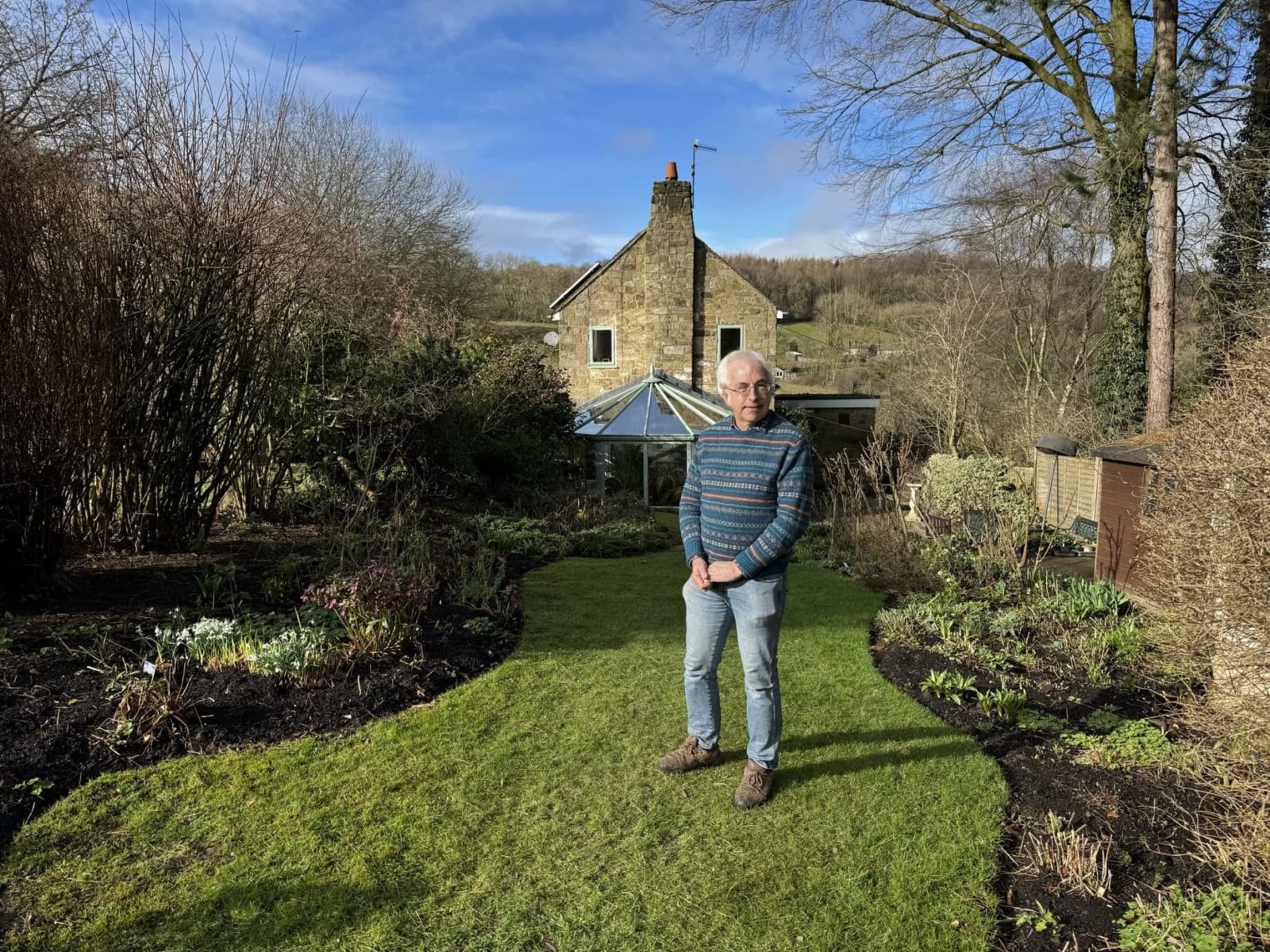
Dr David Moreton has been opening his Derbyshire garden to the public through the National Garden Scheme for the past 15 years.
Known for its stunning displays of spring colour, we decided to visit Chevin Brae to find out more about David and the stunning space he has created.
On the day of our visit, the sun was shining, and the mild air coupled with the flowers that had started to emerge in the space really made it feel like spring was just around the corner.
David kindly showed us around and explained everything there was to know about this lovely sloping garden.
For the full video tour and to see all the stunning plants in flower, check out the video below:
- KEY FEATURES: Spring Bulbs / Sloping Garden
- WHEN TO VISIT: Early Spring / Early Autumn
- ADMISSION PRICE: £3.00 (children free)
- ADDRESS: Chevin Road, Milford, Belper, Derbyshire, DE56 0QH
- WEBSITE: National Garden Scheme
The Man Behind The Garden
“I’ve always been a keen gardener ever since my parents gave me a little plot to grow flowers and vegetables in when I was about 10,” David begins.
“I’ve owned the garden for 25 years now. When I inherited it, it was just like a field. Almost everything that you can see, I’ve put in.”
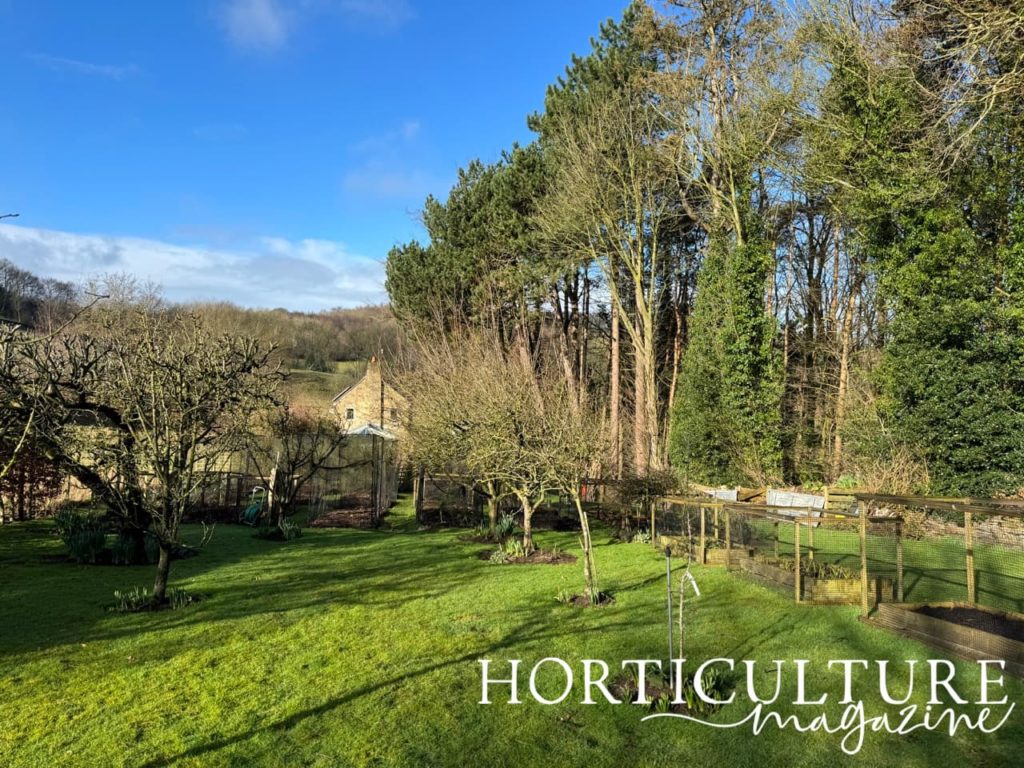
“It was somebody from work who visited the garden and they suggested that I open it to the public which I would have never considered myself, to be honest.
“It was about 15 years ago that I first took the plunge and went for it!”
The Garden Layout
The garden is built around a stunning Victorian home, with several paths lined with shrubs surrounding the building.
“The house itself was built in 1850 and, like most of the houses in Milford, it was built by the local mill owners.
“By the 1960s it had become a ruin and was done out then. Over the years, more and more of the garden was added on and purchased by the previous owners.”
The main part of the garden is situated on a slope, with caged vegetable beds closer to the home and drifts of spring bulbs at the top near to a small summer house.
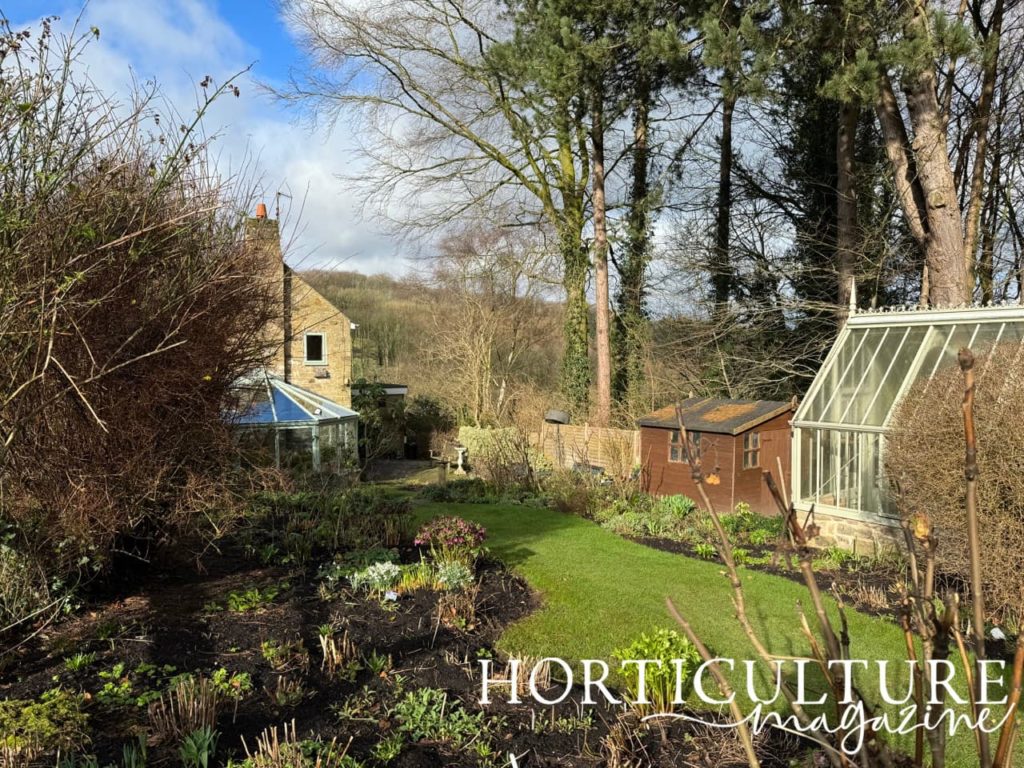
On the lawn close to the house, there’s also a small pond and some more formal borders, filled in February with lots of spring bulbs.
“I’ve got a beautiful pink camellia just coming out which I’m really chuffed with,” David explains, as he shows us around one corner of the space behind the building.
“It’s a plant tucked away in my garden which you won’t see unless you look for it. I love it.”
David has several other camellias in flower doted throughout his garden, including a huge white flowering variety at the entrance to the space:
“It’s not exactly hidden! This one flowers from January time and it has done so well this year, it’s incredible. I’ve never seen so many flowers on it.
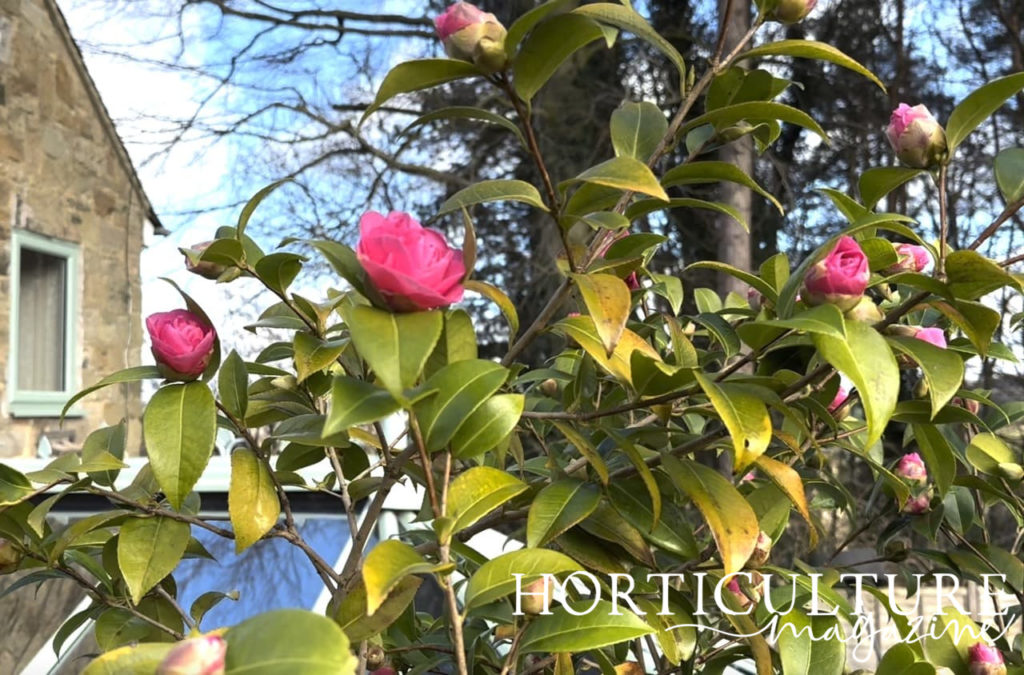
“I’ve noticed because I’ve got acid soil that all these camellias do really well in my garden, which is nice. I planted a few of them when I first arrived at the property, as they were gifts from my parents.”
We were guided to the entrance to the garden at the end of the tour. This grassy verge is on another steep hill and is surrounded by shrubs with a lawn in the centre.
“Finally, there’s this little bed at the front which was a lockdown project,” says David, gesturing to the small formal bed at the front of his drive.
“Again, there’s lots of winter flowering things that are doing well, like primroses, cyclamen, aconites, hellebores and so on. It has done really well, actually.”
David’s Favourite Plants
“Because of my parents’ influence, I tend to like a lot of the plants that they did,” explains David.
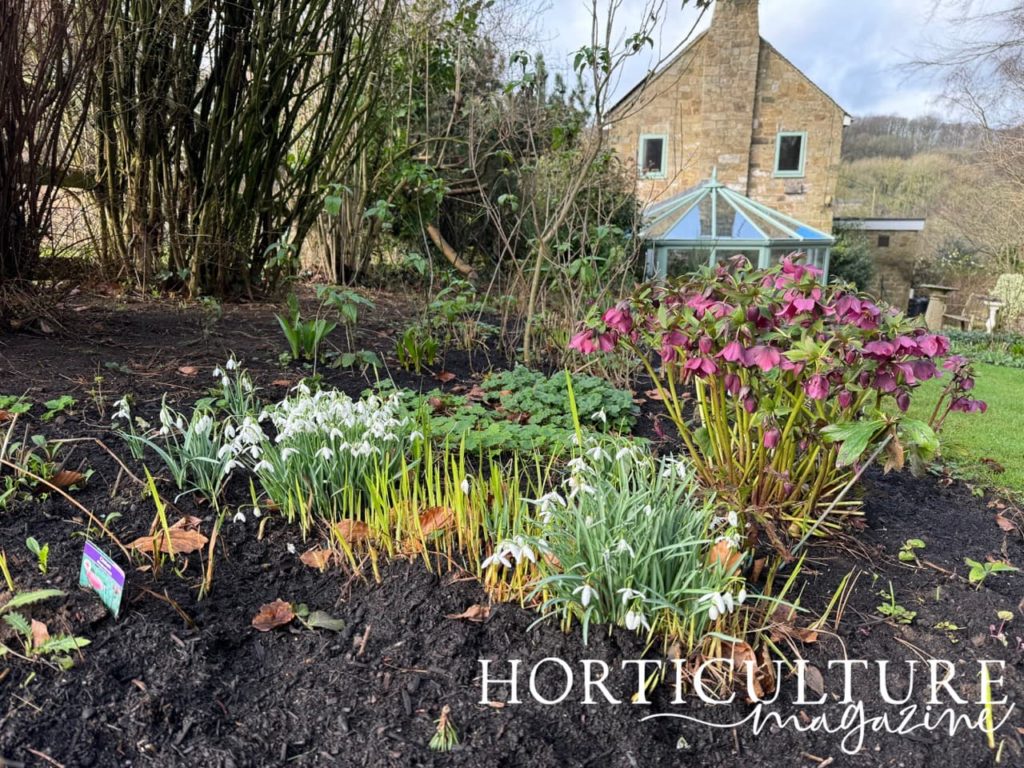
“Aconites, for example, they were my mum’s favourite, but I love them too, so there’s lots of them here.
“I’ve got some Heleniums from a great uncle and Lavender from my Great Grandad – there are lots of things that have been passed on.”
February Highlights
“Since I’ve retired, I’ve tidied up more corners of the garden than I did before,” he shares, whilst we are stood at the very top of the sloping garden, overlooking the daffodils that are waiting to flower.
“Every year I add loads of winter flowering plants like cyclamen, snowdrops, aconites so there’s lots of colours at this time of year.
“I’ve concentrated my efforts on trying to extend the flowering season.”
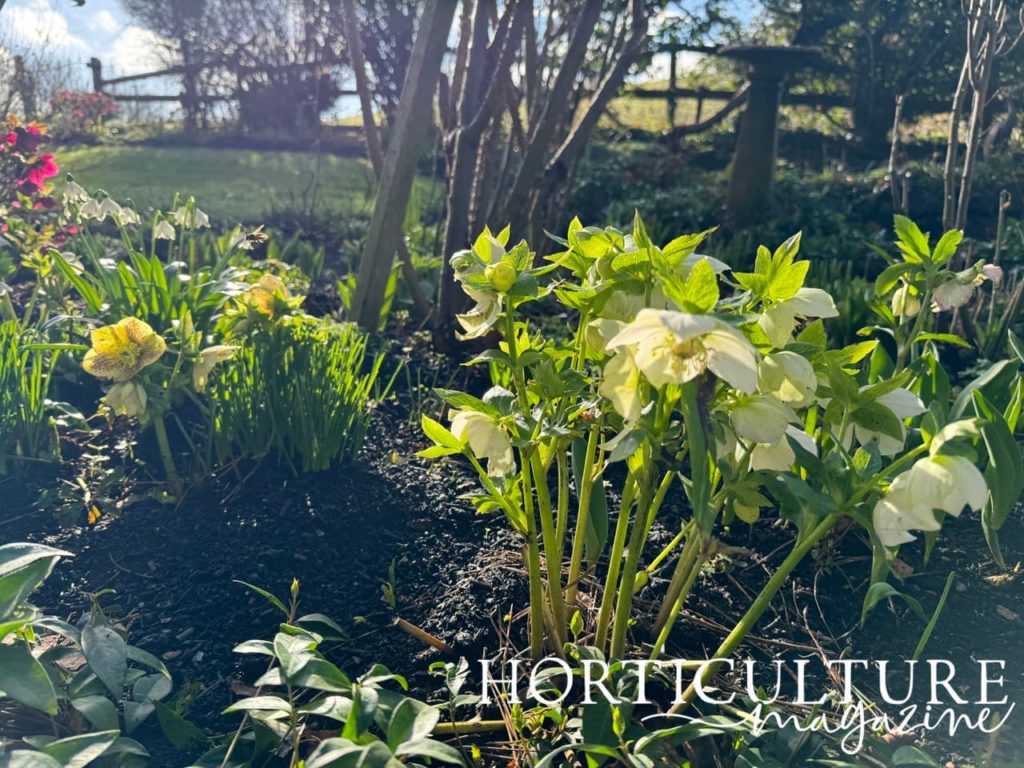
Suprisingly, there was lots more in flower than just the usual spring culprits, including a lovely purple flowering daphne:
“Usually, you don’t see daphnes flowering so well this far north, but this is a Daphne mezereum and it has flowered incredibly well over the past five years here.”
There were some other lovely plants in flower including a large yellow flowering mahonia shrub, which was covered in bees – a truly delightful sight.
What The Garden Means
“When I was working, it was incredible therapy to work in this garden,” David reflects.
“I just love being outside and the reward you get for relatively little effort. You plant a bulb and just see it grow! It keeps you outside in the fresh air – I love it.
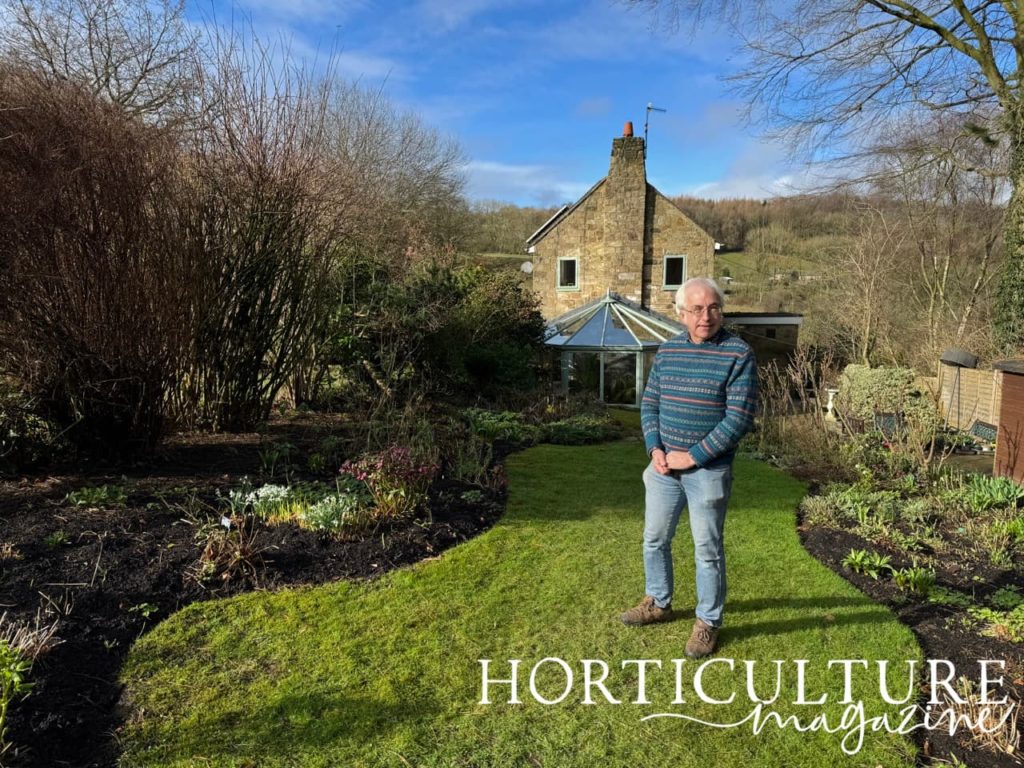
“I must admit, I like sharing it with people as well and it’s nice that they can enjoy it too.”
Fancy a visit to Chevin Brae?
Book a visit in March or August (or by arrangement) via the NGS website here.

